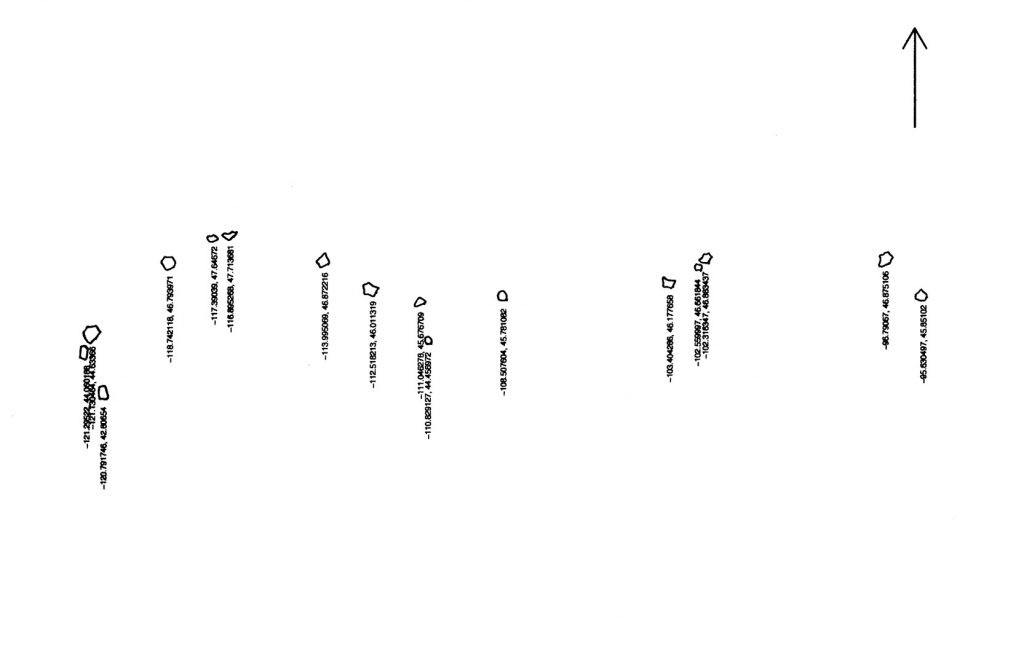Comparing two infinite languages might seem like an impossible task. COMPARE.EDU.VN provides a detailed analysis to help you understand the complexities involved. This guide explores the different methods and considerations for comparing infinite languages, providing a solid foundation for anyone looking to delve into this fascinating topic, and offers key insights into language comparison and formal language theory.
1. Understanding Infinite Languages: The Foundation
1.1. What is a Language in Computer Science?
In computer science, a language is a set of strings formed from a finite set of symbols, known as the alphabet. This definition is central to understanding how we work with and manipulate languages in theoretical computer science.
1.2. Finite vs. Infinite Languages
The primary distinction lies in the number of strings each language contains:
- Finite Language: A language containing a limited, countable number of strings.
- Infinite Language: A language with an unlimited number of strings.
1.3. Examples of Infinite Languages
Examples that illustrate the concept of infinite languages include:
- L1 = {a^n b^n | n ≥ 0}: The set of strings with an equal number of ‘a’s followed by ‘b’s.
- L2 = {w | w is a string of 0s and 1s}: The set of all possible binary strings.
- L3 = {w | w is a palindrome over the alphabet {a, b}}: The set of all strings that read the same forward and backward.
2. Why Compare Infinite Languages?
2.1. Theoretical Applications
Comparing infinite languages is crucial in theoretical computer science for several reasons:
- Formal Language Theory: To understand the properties and classifications of languages, such as regular, context-free, and recursively enumerable languages.
- Automata Theory: To design and analyze automata (e.g., Finite Automata, Pushdown Automata, Turing Machines) that recognize these languages.
- Computability Theory: To determine the limits of what can be computed and to classify problems based on their computational complexity.
2.2. Practical Applications
Infinite language comparisons also have real-world implications:
- Compiler Design: When designing compilers, it is crucial to understand and compare the languages that the compiler will process.
- Natural Language Processing (NLP): While natural languages are complex and evolving, understanding formal language theory helps in creating models and algorithms for NLP tasks.
- Software Verification: Ensuring that software behaves as expected often involves verifying that the set of possible program executions (an infinite language) meets certain specifications.
3. Challenges in Comparing Infinite Languages
3.1. The Infinite Nature of the Task
The primary challenge is that infinite languages, by definition, contain an unlimited number of strings. This makes direct, element-by-element comparison impossible.
3.2. Undecidability Issues
Many questions about infinite languages are undecidable, meaning there is no algorithm that can always provide a correct yes or no answer. For example:
- Equivalence Problem: Determining whether two arbitrary languages are equivalent (i.e., contain the same strings) is undecidable for many classes of languages.
- Emptiness Problem: Determining whether a language is empty (i.e., contains no strings) is also undecidable for certain language classes.
3.3. Representation Complexity
Infinite languages can be represented in various ways, such as:
- Grammars: Formal rules that generate the strings of the language.
- Automata: Machines that recognize the strings of the language.
- Regular Expressions: Patterns that match the strings of the language.
The complexity of these representations can vary significantly, making comparisons more difficult.
4. Methods for Comparing Infinite Languages
4.1. Comparing Language Classes
One way to compare infinite languages is by classifying them into different language classes:
- Regular Languages: Languages that can be recognized by Finite Automata or described by regular expressions.
- Context-Free Languages: Languages that can be generated by Context-Free Grammars and recognized by Pushdown Automata.
- Recursively Enumerable Languages: Languages that can be recognized by Turing Machines.
By determining the class to which each language belongs, we can make general comparisons about their properties and complexity.
4.2. Set-Theoretic Operations
Although we cannot directly compare all strings in two infinite languages, we can perform set-theoretic operations to understand their relationships:
- Union (L1 ∪ L2): The set of all strings that are in L1 or L2 (or both).
- Intersection (L1 ∩ L2): The set of all strings that are in both L1 and L2.
- Difference (L1 – L2): The set of all strings that are in L1 but not in L2.
By analyzing the results of these operations, we can infer properties about the languages.
4.3. Grammar and Automata Comparison
-
Grammar Transformation: Comparing the grammars that generate the languages. This involves techniques such as:
- Simplification: Removing unnecessary rules or symbols.
- Normalization: Converting the grammar to a standard form (e.g., Chomsky Normal Form).
-
Automata Minimization: Converting the automata to their minimal equivalent form. This simplifies the comparison process and reveals underlying structural similarities.
-
Equivalence Testing: Applying algorithms to determine if two automata are equivalent (i.e., recognize the same language).
4.4. Properties and Invariants
- Pumping Lemma: Using the Pumping Lemma to prove that a language is not regular or not context-free.
- Closure Properties: Checking whether the language is closed under certain operations (e.g., union, intersection, concatenation).
- Decidability Properties: Investigating whether certain problems about the language are decidable.
4.5. Simulation and Approximation
- Simulation: Running simulations to test how the languages behave under certain conditions.
- Approximation: Using techniques to approximate the languages and compare their approximations.
5. Case Studies: Comparing Specific Infinite Languages
5.1. Comparing Two Regular Languages
Consider two regular languages:
- L1 = {a^n | n is even}: The set of all strings with an even number of ‘a’s.
- L2 = {a^n | n is a multiple of 3}: The set of all strings with a number of ‘a’s that is a multiple of 3.
Comparison Methods:
- Regular Expressions: L1 can be represented as (aa) and L2 as (aaa).
- Finite Automata: Constructing minimal DFAs (Deterministic Finite Automata) for each language and comparing them.
- Intersection: L1 ∩ L2 = {a^n | n is a multiple of 6}, which is also a regular language.
5.2. Comparing a Regular and a Context-Free Language
Consider:
- L1 = {a^n b^n | n ≥ 0}: A context-free language.
- L2 = {ab}: A regular language representing any number of ‘a’s followed by any number of ‘b’s.
Comparison Methods:
-
Set Operations:
- L1 ∩ L2 = L1, since every string in L1 is also in L2.
- L2 – L1 is an infinite language containing strings like “aa”, “bb”, “aab”, etc., but not of the form a^n b^n.
-
Pumping Lemma: Using the Pumping Lemma to prove that L1 is not regular, emphasizing the difference between the two languages.
5.3. Comparing Two Context-Free Languages
Consider:
- L1 = {a^n b^n | n ≥ 0}: The classic context-free language.
- L2 = {b^n a^n | n ≥ 0}: Another context-free language, but with the ‘b’s preceding the ‘a’s.
Comparison Methods:
- Grammar Comparison: The grammars generating these languages are structurally different.
- Intersection: L1 ∩ L2 = {ε} (the empty string), indicating that the only string common to both languages is the empty string.
6. Advanced Techniques
6.1. Using Formal Verification Tools
Formal verification tools can be used to analyze and compare infinite languages by:
- Model Checking: Verifying that the languages satisfy certain properties.
- Theorem Proving: Proving theorems about the languages.
6.2. Approximation Techniques
- Over-Approximation: Creating a larger, simpler language that includes the original language.
- Under-Approximation: Creating a smaller, simpler language that is included in the original language.
6.3. Statistical Methods
- Language Modeling: Building statistical models of the languages and comparing their distributions.
- Machine Learning: Using machine learning algorithms to classify and compare the languages.
7. Practical Tools and Resources
7.1. Software Tools
- Automata Tutor: A tool for creating and simulating automata.
- JFLAP: A visual tool for experimenting with formal languages.
- SPARQL: A query language used to retrieve and manipulate data stored in Resource Description Framework (RDF) format.
7.2. Online Resources
- COMPARE.EDU.VN: Your go-to source for comprehensive comparisons.
- Stack Overflow: A Q&A site for programming questions.
- Wikipedia: A collaborative encyclopedia with detailed information on formal language theory.
8. Future Directions
8.1. Advancements in Formal Language Theory
Continued research in formal language theory is focused on:
- New Language Classes: Discovering and characterizing new classes of languages.
- Decidability Results: Finding new decidability results for language problems.
- Practical Applications: Applying formal language theory to solve real-world problems.
8.2. Machine Learning and Language Comparison
The intersection of machine learning and language comparison is a growing area of research:
- Learning Languages: Using machine learning algorithms to learn formal languages from data.
- Comparing Languages: Using machine learning to compare and classify languages.
9. Key Considerations for Effective Language Comparison
9.1. Define the Scope
Clearly define the purpose and scope of the comparison. What aspects of the languages are most important?
9.2. Choose Appropriate Methods
Select the comparison methods that are most appropriate for the language classes and the specific questions you are trying to answer.
9.3. Validate Results
Validate your results using multiple methods and tools.
10. Conclusion: Navigating the Infinite
Comparing two infinite languages is a complex task that requires a deep understanding of formal language theory, automata theory, and computability. By using a combination of theoretical and practical methods, we can gain valuable insights into the properties and relationships of these languages. Whether for theoretical research or practical applications, the ability to compare infinite languages is an essential skill for computer scientists and engineers.
11. FAQs About Comparing Infinite Languages
11.1. Is it possible to compare all infinite languages?
No, it is not possible to compare all infinite languages due to the undecidability of many problems in formal language theory.
11.2. What are the primary challenges in comparing infinite languages?
The primary challenges include the infinite nature of the languages, undecidability issues, and the complexity of language representations.
11.3. How do we compare regular languages?
Regular languages can be compared using regular expressions, finite automata, and set operations.
11.4. What is the role of grammars in comparing languages?
Grammars are used to generate the strings of a language, and comparing grammars can reveal structural similarities and differences between languages.
11.5. Can automata be used to compare languages?
Yes, automata can be used to compare languages by converting them to minimal equivalent forms and testing their equivalence.
11.6. What are set-theoretic operations and how are they useful?
Set-theoretic operations (union, intersection, difference) can help infer properties about languages by analyzing the results of these operations.
11.7. What is the Pumping Lemma and how is it used?
The Pumping Lemma is used to prove that a language is not regular or not context-free, emphasizing the differences between languages.
11.8. How can formal verification tools help in language comparison?
Formal verification tools can analyze and compare infinite languages by model checking and theorem proving.
11.9. What are approximation techniques in language comparison?
Approximation techniques involve creating simpler languages that over-approximate or under-approximate the original language to facilitate comparison.
11.10. What future advancements are expected in language comparison?
Future advancements include discovering new language classes, finding new decidability results, and integrating machine learning techniques for language comparison.
Are you struggling to compare different products, services, or ideas? Do you find it challenging to make informed decisions due to the overwhelming amount of information available? At COMPARE.EDU.VN, we understand these difficulties and offer comprehensive, objective comparisons to help you make the best choices.
Call to Action
Visit COMPARE.EDU.VN today to explore detailed comparisons and make confident decisions. Contact us at:
Address: 333 Comparison Plaza, Choice City, CA 90210, United States
WhatsApp: +1 (626) 555-9090
Website: compare.edu.vn

